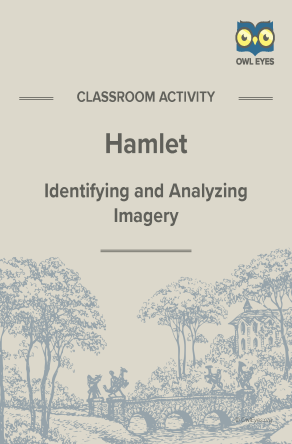Hamlet Imagery Activity
- 8 pages
- Subject: Imagery, Tone, Lesson Plans and Educational Resources
- Common Core Standards: RL.11-12.1, RL.11-12.4, RL.11-12.5, RL.9-10.1, RL.9-10.4
Additional Hamlet Resources
Product Description
Hamlet is one of William Shakespeare’s most performed and studied plays. The tragedy tells the story of Hamlet, the prince of Denmark, as he struggles with the aftermath of his father’s recent death. The throne of Denmark and the affections of his mother have both been usurped by King Claudius, whom Hamlet reviles. Hamlet is a work of psychological and philosophical depth, exploring loss, grief, desire, despair, and death with great insight and poetic power. Because the play has no narrator, the images in Hamlet are rhetorical in nature: the characters use imagery in their speech in order to illustrate their ideas and innermost emotions.
Skills: analysis, drawing inferences from text, close reading, identifying the relationship between words
About This Document
The Owl Eyes Imagery activity gives students an opportunity to practice identifying and analyzing imagery. Imagery within a text creates a sensory experience that can connect readers to a text’s setting, atmosphere, or overall aesthetic. Studying imagery will help students understand how narrators or principal characters feel. The main components of this worksheet include the following:
- A brief introduction to the text
- A handout on types of imagery with examples from classic texts
- A step-by-step guide to activity procedure
- Selected examples of imagery from the text
In completing this worksheet, students will learn to identify and analyze different kinds of imagery in order to develop close reading skills and identify the effect imagery has on their reading experience.







